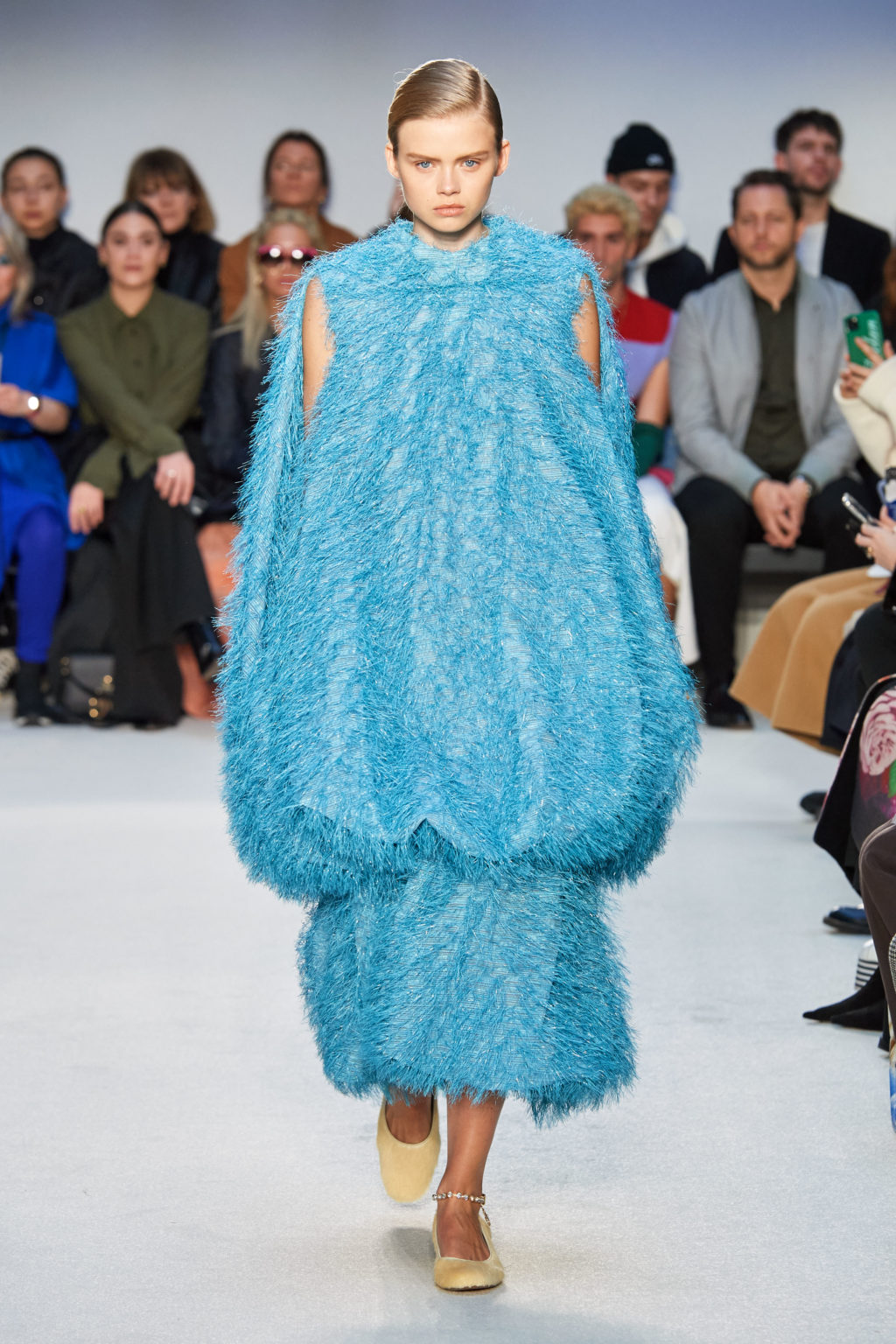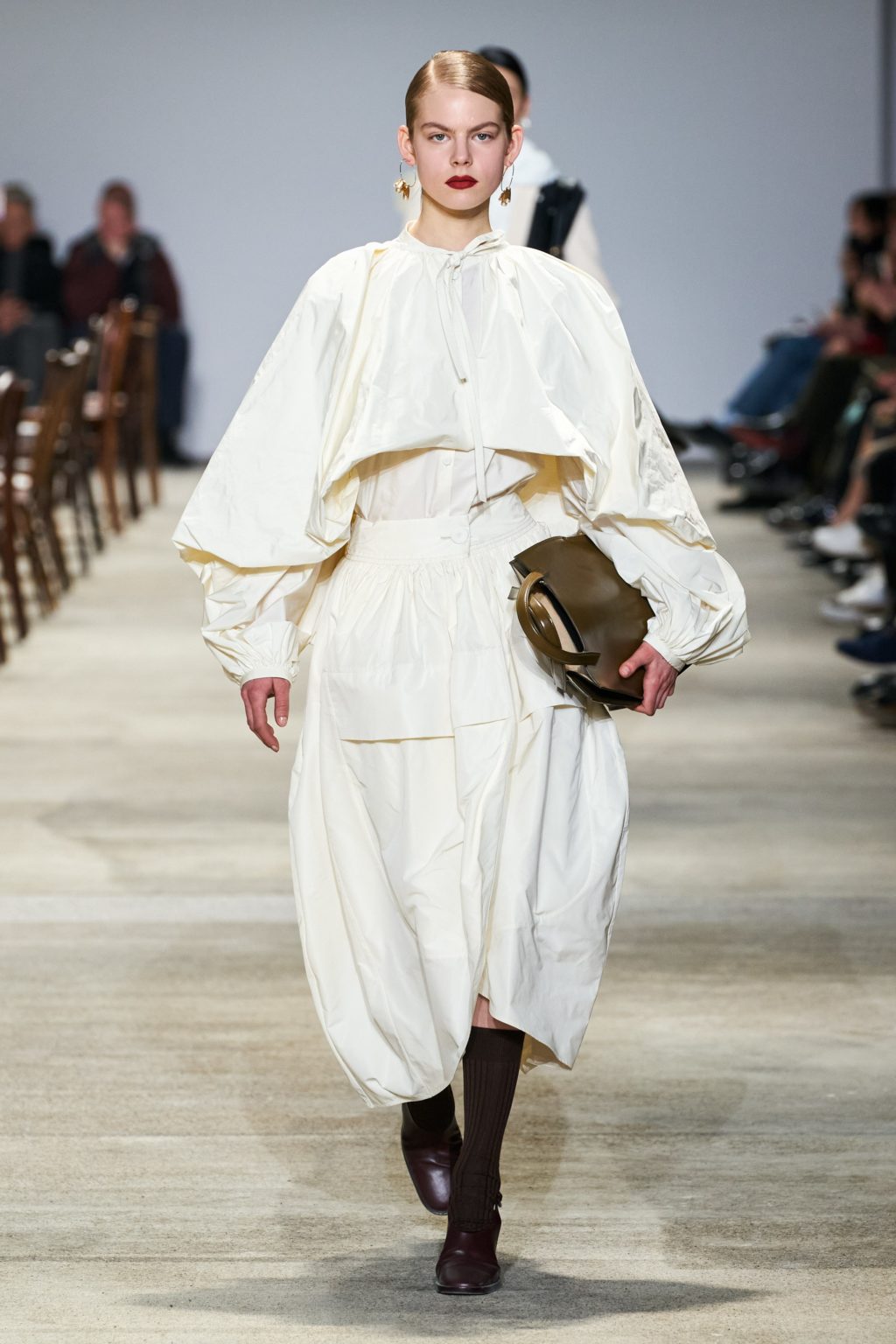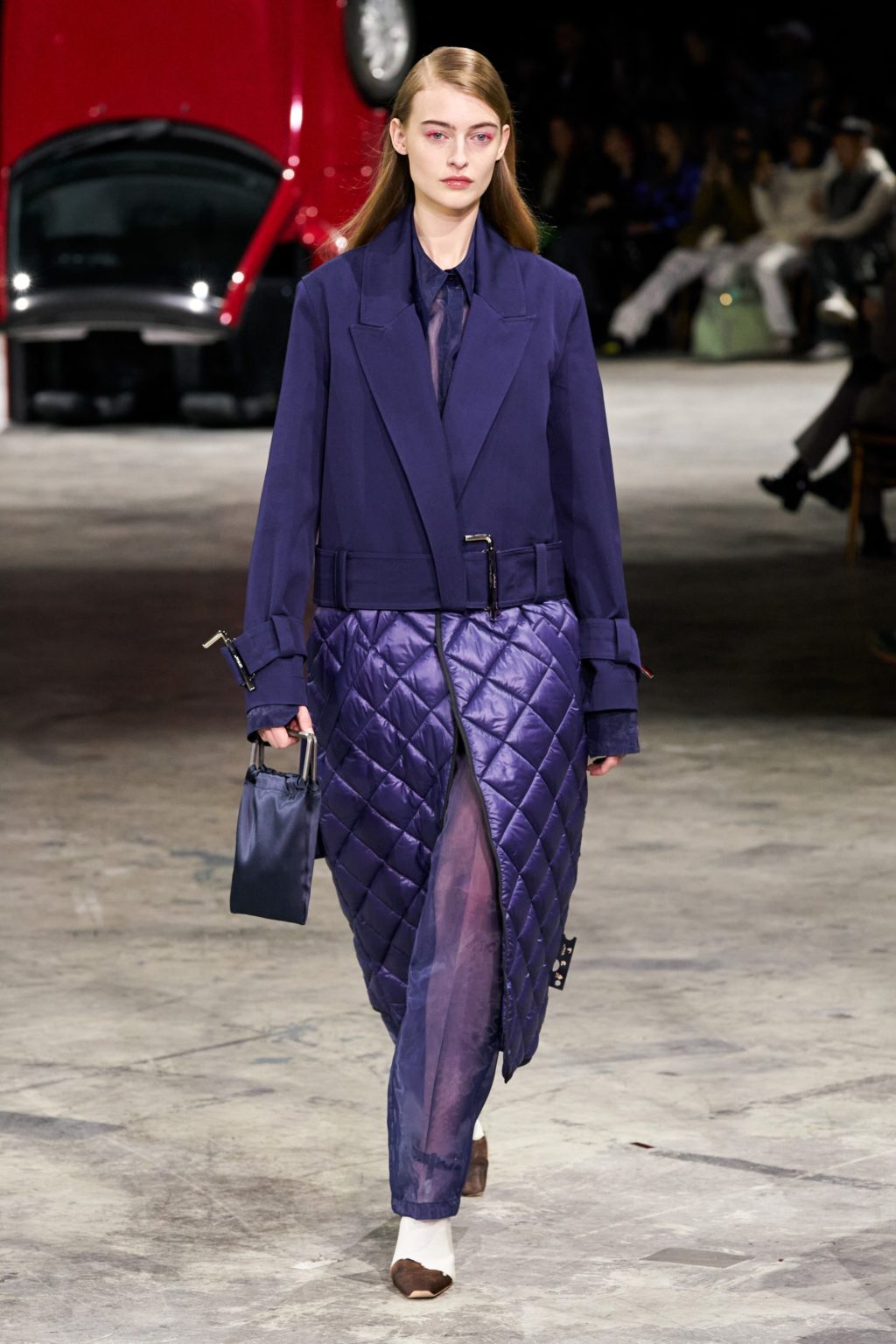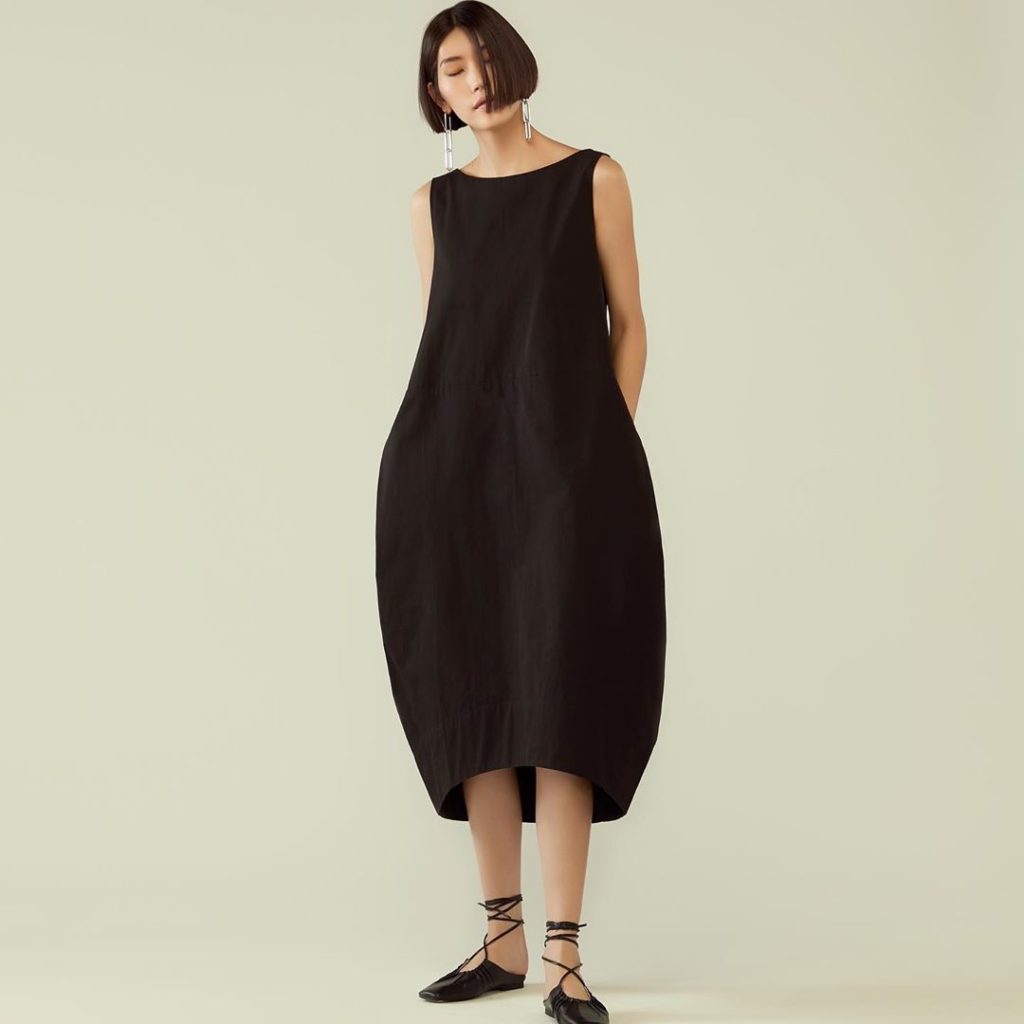Do a quick mental recap of the clothes you gravitated towards the most during quarantine. What did they look like? Or more importantly, how did they make you feel? Much like comfort food, the clothes we reach for in times of high stress can satiate our cravings for familiarity, security and safety.
The autumn/winter 2020 runways had much to offer when it came to silhouettes that swathed the body, almost to cradle and cushion the sense of vulnerability we all feel mid-pandemic. A departure from slinky slip dresses that cling and hug, these cocoon shapes act as a force field against the things that bring us down—be it that familiar hit of self-doubt or a general weariness towards what has felt like the longest year yet.
“Clothes are very personal to us. Think of them as a second skin that we use as a form of protection and self-expression that doubles as a form of communication with the outside world,” says Dr Jekaterina Rogaten, course leader of MSc Applied Psychology in Fashion at the London College of Fashion, a course that marries the study of human behaviour with fashion. “Past their obvious physical aspects, [clothes] also protect us psychologically as a means of self-help therapy to moderate emotions and as a form of strength to mask our innermost vulnerability.”
Designers seemed to have anticipated this timely desire for protection. London wunderkind Richard Quinn showed us just how to literally take up space. Hemlines gathered from mid-thigh, knee to ankle to create volume—each floral silk number wiping clean humankind’s memory of empire waistlines. At Simone Rocha, dresses were similarly bulbous. Bearing closer resemblance to tulips in bloom, Rocha opted for rich cloqué and embroidered satin rendered in shades of cobalt and powder blue.



Such fantastical propositions from the runway may be the last thing that comes to mind when we think of articles of clothing that protect. In the most literal sense, protective wear in the last few months has meant masks and gloves. Amidst a pandemic, such pieces may read as the sartorial equivalent of Marie Antoinette’s infamous “Let them eat cake”. For some, though, they symbolise a hopefulness for what this unprecedented time can posit.
In the age of what we now term as the ‘new normal’, many of us have likely gathered an arsenal of go-to pieces that guarantee maximum comfort. But what if comfort didn’t come in the form of a soft grey jersey or breathable cotton? What if sartorial comfort can be extrapolated to include look-at-me silhouettes; the statement pieces in your wardrobe that you saved for special occasions? These pieces represent your aspirational style; confidence yet attained.
Escapism has always been fashion’s catnip. But as our sociocultural climate continues to change, momentary hedonism as told through over-the-top one-pieces might not be up everyone’s alley.
If that resonates, look to more subdued takes on the cocoon memo. Minimalist doyens Lucie and Luke Meier of Jil Sander have mastered the art of billowy cuts that don’t drown you. Meanwhile, Off-White’s Virgil Abloh opted for curves that gently slope off the hips, playfully discarding preconceived beliefs of ‘curvy in all the right places’. At both Loewe and his eponymous JW Anderson, Jonathan Anderson made a strong case for clothes that allow us to nestle.



“The fact that we don’t show the body—that trend started with Billie Eilish, who didn’t want to show her body and was really clear about that by wearing only large oversized outfits,” observes Dr Aurore Bardey, fashion and consumer psychologist who leads the BA (Hons) Fashion Psychology course at the London College of Fashion. “It’s really interesting that designers are following this trend of concealing the body with really voluminous shapes.”
For a homegrown option, local label Rye carries a cocoon dress so popular it’s become a permanent mainstay of its assortment. Rye’s founder and designer, Bessie Ye, has located the sweet spot between structured and airy for this capsule item, perfected for our oppressive humidity. “In times like this, people really gravitate towards fabric; towards feeling good,” says Ye.

So it seems protection is not just cocoon-shaped and can take many forms. While some opt for a healthy balance of escapism and optimism, others may prefer concealment and practicality; or all of the above—it’s not a binary.
“Clothing was and is always about protection first and self-expression second,” Dr Rogaten tells us. “During uncertainty and crisis, the protective feature of clothing will come to the forefront. This side of clothing always overtakes the need for self-expression.”
For more stories like this, subscribe to the print edition of Vogue Singapore.





